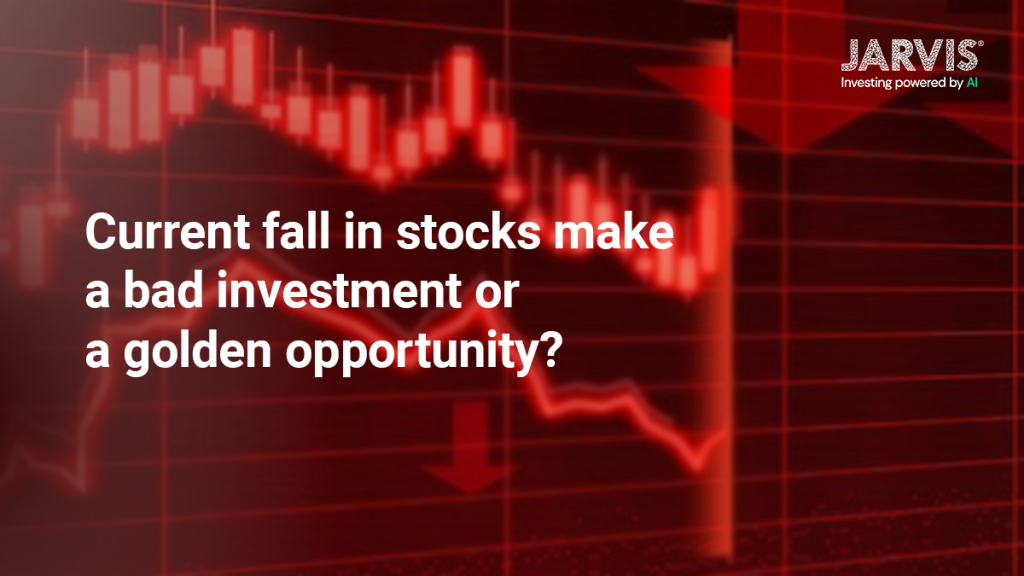Investing in an unpredictable stock market can regularly turn into an emotional roller coaster, and in times of volatility and market corrections, it can feel downright ominous. Current fall in stocks and falls in Indian stock market have scared and shaken many retail and institutional investors. Let’s examines whether the current dip signals a bad investment opportunity or a strategic entry point for long-term wealth creation.
Market Volatility
The stock market is a volatile one. A trend arises when we look at historical data of the benchmark indices such as the BSE Sensex and the Nifty 50. An even 5-15% correction is not unusual and can often be caused by global events, economic policies changes, geopolitical tensions or external shocks such as a pandemic. In the Covid sex case, for example, the Sensex dropped by almost 38 per cent on 24 March, 2020 when the initial Covid terror threatened the, but it came back almost by 80 per cent in the next couple of months.
Reasons for the Current Fall
Global Economic Slowdown – In consequence of the fears about the slowing of global growth and of potential recessions in the developed markets, the investor sentiment is cautious. That has triggered foreign institutional investors (FIIs) pulling out money from emerging markets, including India.
Inflation and Interest Rates – Already spooked markets, the biggest rise in interest rates and inflation worldwide and domestically are prompting nervousness. The Reserve Bank of India (RBI) in India has shifted to a tighter monetary policy and the repo rate has been raised to 6.75%, which brings up the borrowing cost for businesses.
Geopolitical Tensions – Supply chains are being disrupted by ongoing conflicts, commodity prices are going higher worldwide and investor sentiment is also shaken by ongoing conflicts such as Russia against Ukraine.
Data Analysis
Valuation metrics like the Price to Earnings (P/E) ratio can help us to test whether the Indian market is overvalued, undervalued, or fairly valued. As of the latest market correction – :
- The P/E ratio of the Nifty 50 is about 20 times earnings down from its long term average of nearly 22 to 23.
- There are good values (recent sell offs) in certain sectors such as banking and IT. For eg., HDFC Bank P/E is at 18 as against historical best.
These are dips that show that some of the stocks, at least, have perhaps gotten cheap enough to be worth looking at for longer term investors.
Impact on Retail Investors
Retail investors often panic during short term market corrections and herd like. Common mistakes are to sell when dips occur in order to cut losses, or wait for the markets to stabilize. But history has proved that wealth is created when you buy during market slumps and hold good quality stocks for the long haul.
There are stocks like Infosys and TCS in IT. Both stocks were hit hard during the March 2020 crash. However, those patient investors willing to buy into the dip and stay held for two years returned over 100% returns.
Rupee-cost averaging also works in favor of systematic Investment Plans (SIPs) in mutual funds, as market corrections also mean that rupee gets cheaper, thereby increasing investments. Market falls means as the market keeps falling investors can purchase more units at lower prices, making their long term returns better.
Bearish Market Defensive Sectors
If the future looks frightful, invest in the defensive sectors of FMCG, pharmaceuticals and utilities. Because their demand remains pretty stable relative to the economy, these tend to be less volatile during downturns.
Factors that Foster Long Term Growth
India’s long term growth story is still intact after short term turbulence. Some encouraging trends include: –
- Economic Growth – Despite the growth, GDP growth is projected to continue at a healthy pace of around 6.5-7% for FY24, which is one of fastest among major economies.
- Demographic Dividend – With India’s young, growing population, it means good quality of source of able workers as well as consumer base.
- Government Initiatives – Within the manufacturing, technology and other key sectors, growth is being driven by programs like Make in India, Atmanirbhar Bharat and PLI (Production-Linked Incentive) scheme.
Strategies to Adopt in a Falling Market
- Diversification – Investment risk can be spread by investment in different sectors and securities (i.e., equities, bonds, gold).
- Quality Stocks – Concentrate on the really solid companies with low debt, continual earnings growth and good management.
- Long-Term Focus – Don’t be tempted to time the market. Instead, think in terms of the long term investing, because historical experience indicates that markets are usually quick to recoup from downturns.
Conclusion
A Bad Investment or a Golden Opportunity? The current market fall, while unsettling, does not inherently make the stock market a bad investment. On the contrary, market downturns often present opportunities to buy fundamentally strong stocks at attractive valuations. Investors should exercise caution, conduct thorough research, and avoid panic-selling. For those willing to stay the course, history suggests that market dips can transform into profitable entry points, paving the way for substantial wealth creation in the future. “Be fearful when others are greedy, and greedy when others are fearful” This timeless advice from Warren Buffett holds true now more than ever. while market downturns can be intimidating, they often serve as a reminder that successful investing is a marathon, not a sprint. Patience, diversification, and a focus on long term fundamentals are the key pillars for riding out volatility and achieving lasting financial growth in the Indian stock market.
